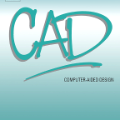This article presents a new hand architecture with three under-actuated fingers. Each finger performs spatial movements to achieve more complex and varied grasping than the existing planar-movement fingers. The purpose of this hand is to grasp complex-shaped workpieces as they leave the machining centres. Among the taxonomy of grips, cylindrical and spherical grips are often used to grasp heavy objects. A combination of these two modes makes it possible to capture most of the workpieces machined with 5-axis machines. However, the change in grasping mode requires the fingers to reconfigure themselves to perform spatial movements. This solution requires the addition of two or three actuators to change the position of the fingers and requires sensors to recognize the shape of the workpiece and determine the type of grasp to be used. This article proposes to extend the notion of under-actuated fingers to spatial movements. After a presentation of the kinematics of the fingers, the problem of stability is discussed as well as the transmission of forces in this mechanism. The complete approach for calculating the stability conditions is presented from the study of Jacobian force transmission matrices. CAD representations of the hand and its behavior in spherical and cylindrical grips are presented.
翻译:文章展示了新的手结构结构, 有三个触动不足的手指。 每个手指都进行空间运动, 以实现比现有的平板移动手指更复杂、 更多样化的抓取。 此手的目的是在离开机械中心时捕捉复杂形状的工件; 在抓柄分类学中, 常用圆柱形和球形抓柄来抓取重物。 结合这两种模式可以捕捉用5轴机器制成的大多数工作件件。 然而, 掌握模式的变化需要手指来重新配置自己来进行空间移动。 这个解决办法需要增加两三个动画器来改变手指的位置, 并需要传感器来辨别工件的形状和确定要使用的抓柄类型。 本条提议将触动不足的手指的概念扩大到空间运动。 在介绍手指的动脉动之后, 讨论了稳定性问题以及这一机制中各种力量的传播问题。 计算稳定性状况的完整方法来自对雅各布林力力阵列的传播研究。 CADAD 其手图示 。




